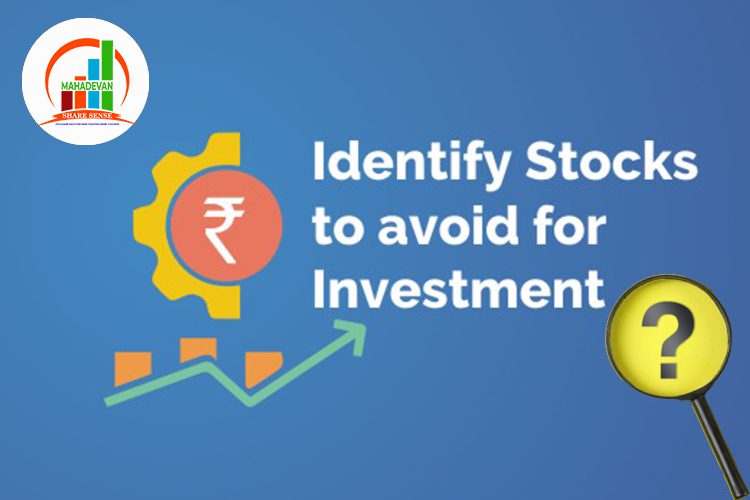

The pandemic has seen a big surge in stock market participation across the world. According to SEBI (The Securities and Exchange Board of India), in the fiscal year 2020, the number of new accounts opened was 4.9 million, a 22.5% jump from the 4 million accounts opened in 2019. But the lack of proper knowledge and the infinite recommendations available on the subject makes it difficult for new investors to find the right stocks for their portfolio.
As a result, they end up buying fundamentally weak stocks and lose their hard-earned money in the stock market. The new investors develop fear and start avoiding the markets and lose out on smart money-making propositions. Therefore, as a beginner, you must know how to identify the stocks to avoid investment.
Parameters for Identifying the Risky Stocks
Following are the parameters for identifying the risky stocks:
- High Leverage and Consistently Increasing Leverage – High leverage means Debt Equity Ratio is more than 2. This means that any micro or mini changes in the industry will affect the performance of the company. Smart investors tend to avoid highly leveraged companies.
Consistently Increasing Leverage is also a bad sign as the interest payment burden increases on a company which ultimately affects its operation. It gets difficult to service the high interest cost whenever there is a change in the interesting scenario, and the financials of the company are affected by it.
- Low Current Ratio – A Low Current Ratio means that the chances for the business to have a deficiency in liquidating its assets for paying off the company debts are high. Investors tend to stay away from companies with Low Current ratios. A ratio lower than 0.75 is known as Low Current Ratio.
- Low-Interest Coverage Ratio – If a company has a low-interest coverage ratio, it means that the company will face difficulty during adverse times to meet its interest obligations.
- Decrease in Promoter/ FII/ DII Holding – If you notice that the promoters of a company are selling shares then it’s a red flag for the business. The promoter might have found a weak link in the company and is no more confident about the future prospects of the business. Similarly, the DII and FII holders keep a strict watch on the performance of the business and if they find something unusual in the workings of the company, they pull out their money by selling the shares. Therefore, these types of stocks must be avoided by the investors.
Read More- Is Short Selling Allowed In India?
- Consistently Decreasing Free Cash Flow per Share – Decreasing Free Cash Flow is a sign that the company is not able to sustain its earnings growth. This may force a business to increase its debt levels or lose the liquidity to stay in the business.
- Consistently Decreasing Annual or Quarterly EPS – EPS or Earning per Share depicts the earnings of a company relative to its price. It means how much is an investor willing to pay for a rupee of a company’s earnings. If you observe that the quarterly or annual EPS of a company decreases over time, it means that the earnings of the company are declining and are not in sync with the company’s price per share.
- Increased Days of Working Capital – If a business has increased days of working capital, it means that the current assets of the company are tied up for more time. Thus, it can lead to more working capital loans if it keeps on increasing at the same pace. This is not a good sign for the company.
- Increased Days of Inventories – Increased days of inventories is a sign that the business is unable to convert its goods into sales and it has bought more than it is capable of selling. If the inventory turnover increases, the cash flows are impacted negatively. It raises doubt on the company’s ability to convert its inventory to sales if the ratio continues to increase.
Summing Up
As an investor, you must know how to identify the stocks to avoid investment. The parameters explained above are one of the most important factors overlooked by beginners as well as experienced investors in the share market. You should never invest in a stock based on your emotions or instincts.
The best way to pick the right stocks is to perform adequate research based on fundamental and technical analysis and make an informed decision about the same. If you are holding shares of companies with the red flags mentioned above, then it is wise to pull out your money and invest it in high-quality stocks with strong fundamentals.














